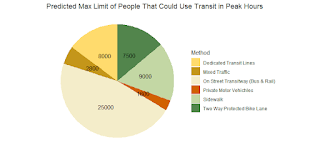Module 2 Assignment: Introduction to Tableau
Module 2: Introduction to Tableau
In this module, we discovered different ways of being able to visually represent data using a program called Tableau. I decided to take this assignment 'home' in a manner, and decided to use a dataset found through the Google Data Search from a national database for DUI statistics between the years 2005-2014.
This unfortunately hits home for me as I have a few friends of mine who have made some poor choices with drinking and driving and have been hurt. Luckily, none of them have passed from their injuries and have since recovered physically and spiritually to become better individuals.
I decided to create two different maps; The first consists of a color coded map at which the hue of each state dictates its metrics intensity. The metrics used for the visualization were the number of occupant deaths in these accident (perpetrator and victim combined) and the impaired driver death rate.
The output for the 'heat map' is as follows, and I decided on hovering my mouse over a state to show its breakdown of data.
As you can see, the map is color coded by the values of the Occupant and Driver fatality rates and are particularly strong on the Eastern Atlantic Seaboard, Midwest and the Deep South. I want to mention as well, to not let the map fool you. The states of the Midwest that are not colored as darkly is simply based on their sparse population. The friends of mine who made their choices happened to be from this region, and according to them and many others I know, its because despite the population, the rates of alcohol consumption and rates of having 'dry municipalities' are much lower than in this region of the nation. This is not a knock at any particular region, but these heavily blue collar states tend to have a higher self reported rate of alcohol consumption, and in my experience working blue collar there is a pretty good reason for this. Texas, Florida and California are significantly darker hued due to having a higher ratio of DUI by way of state population, and ease of access.
It is important to realize what parameters the visual aspects are based off of, because there might be a map such as this, that might make states seem more similar than not. It takes a bit more thought outside of the realm of Data Analytics to be able to understand why that the visual appearances of these maps might not be as good at enunciating differences category for category.
The second map displays a sized dot as representation for the number of driver and occupant fatalities and I made it represent a ratio of DUI deaths per capita of the state. For lack of better words, this chart outlines more of a 1 to 1 or pound for pound kind of representation of this issue. You can see that based on size and comparing state population to the numbers of afflicted individuals, that heavily blue collar, manufacturing, farming and rural states like the Midwest and Southeast have become even more prominent.
The point of making these two maps in these ways is to outline that despite using the same data, there can be immense differences in the ability to perceive the information correctly or acknowledge all states equally due to certain metrics like population being a major outlier. Georgia has a population of just over 10 million, and Ohio has a population of nearly 12 million, and the rates for occupant deaths based off state populations in Georgia is between 24 and 26 percent higher. Both states feature rural areas, but Georgia more than Ohio. Ohio is home to many large cities and metropolitan areas while Georgia has only Atlanta's metropolitan area. One could deduce that in certain lifestyles, and the distribution of these lifestyles amongst a population could influence people to take after certain habits easier than in other places. Just being within earshot of other people at bars, in my own experience as well, people in rural areas are more likely to take the chance and rough it home because of the lack of valuable infrastructure to be damaged, other than their vehicle and its occupants.
I think making the map have differing proximity based on the ratio of population and deaths would be better for the communicative traits of this map. The reason is that sometimes, certain visual aspects by themselves do not do justice. The law of similarity would help push my point a little more because it would be able to show the similar trends in states that might not be metrically similar. This way, the problems and higher proportion states can be revealed and the public can be notified of resources available and to stay vigilant while driving especially at night.




Comments
Post a Comment